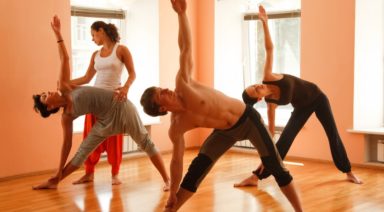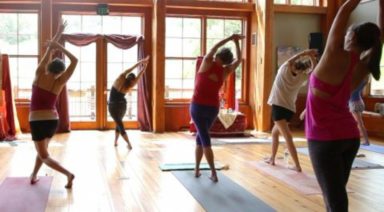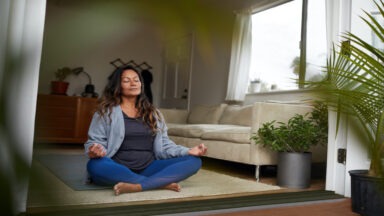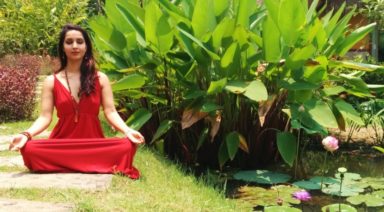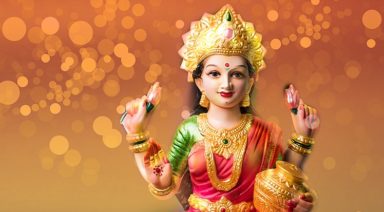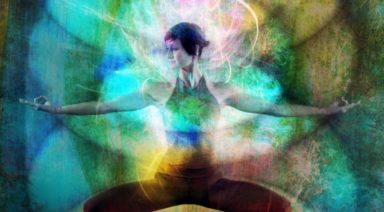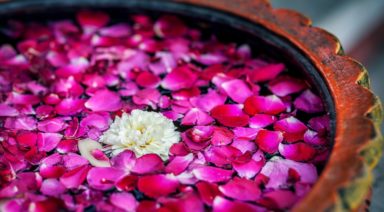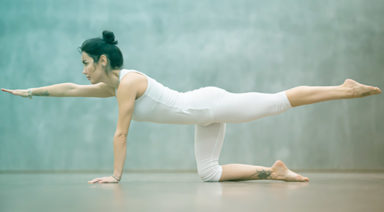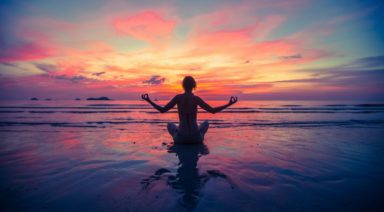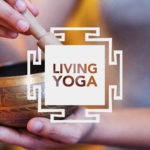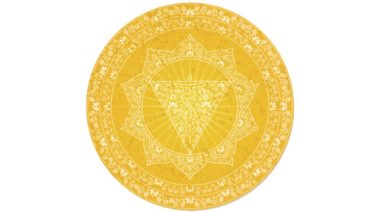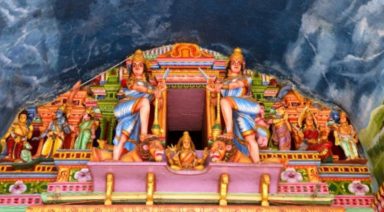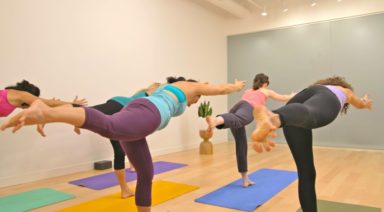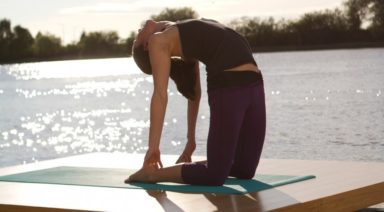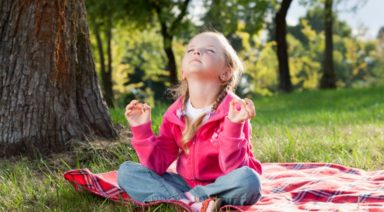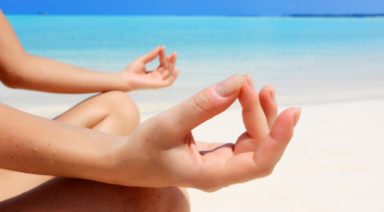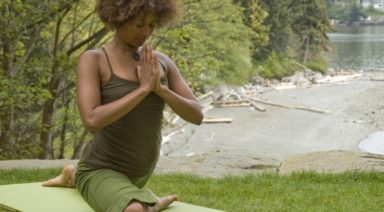5 Steps to Writing Your Best Yoga Biography

Smart, authentic bios are essential for any yoga teacher. They serve as a mini resume, highlighting our credentials and informing potential students about our mission statement and style of teaching. Biographies are used on your personal postcards, flyers and website. The studio or gym you teach at may also ask for your bio to include on their website. Remember that often all a student has, in order to decide whether or not they want to take your class, is your personal story: your biography. It is important that you feel empowered by how you tell that story.
I also understand that for many of us it is not easy to write about oneself. Do you write in first person or third person? What do you include, and how much is too much?
Try taking these steps to write your best biography. Most of all, honor yourself in what you write. By doing so, you honor and elevate the profession of yoga!
Step 1: YOUR PHILOSOPHY
- Write out your personal mission statement.
- Write out your teaching intention: why do you teach?
- Write out your vision statement.
- Write out what yoga means to you.
Step 2: YOUR BRAND
- If you had to describe yourself in one word, what would it be?
- If others described you in three words, what would those be? Ask a couple friends, and find out if this is an accurate portrayal.
- What would a Yelp review of your personality say about you?
- If someone followed you around with a video camera all day, what would the reality TV show about your life be called?
- Your life has a soundtrack: what is the name of your theme song?
Step 3: YOUR SPECIALISM
- Write out ten things that make you a great person.
- Write a list of five things you are passionate about.
- Write out three things that keep you inspired.
- Write a list of three things you are most embarrassed about, and the expert lessons you’ve learned from them.
- Write out how yoga came into your life. What was your first class like for you? What brought you back to a second class?
Step 4: YOUR AUDIENCE
Does how you teach meet the expectations of what you say about yourself in your bio? Please don’t falsely advertise one thing and deliver another. It’s not fair to your clients.
What kind of students would you recommend taking your class? Does your bio speak to them?
What style of yoga do you teach? Be honest; just spell it out.
Offer a brief description of your class so students know what to expect. Include things like whether or not you use music, what the pacing is like (slow, medium, fast), whether you are alignment oriented, if your class heated, what level of physical strength is expected when you teach.
Step 5: YOUR TEACHERS
The best teachers remain lifelong students. Honor your teachers in your bio, those that have taught you through ease or challenge, and the lessons for you now as a teacher too. Model politeness and respect and your students will do the same for you. Karma keeps us real and humble. You are there only because your students show up as you showed up for your teachers. Give good, get good back.
Now take the input from these five steps and write out four different biographies for yourself.
- Twitter-size bio 150 characters
- Short 50 word biography
- First person biography 250 words
- Third person biography 250 words
Some tips in finalizing your biographies:
- Read them aloud to yourself.
- Stand up and read them to a friend.
- Have a friend read them aloud to you.
- Make any necessary edits; every word counts!
- And remember, as you evolve as a teacher, so should your bio. Make a point to revisit it annually.
Tips for Vinyasa Yoga Teachers
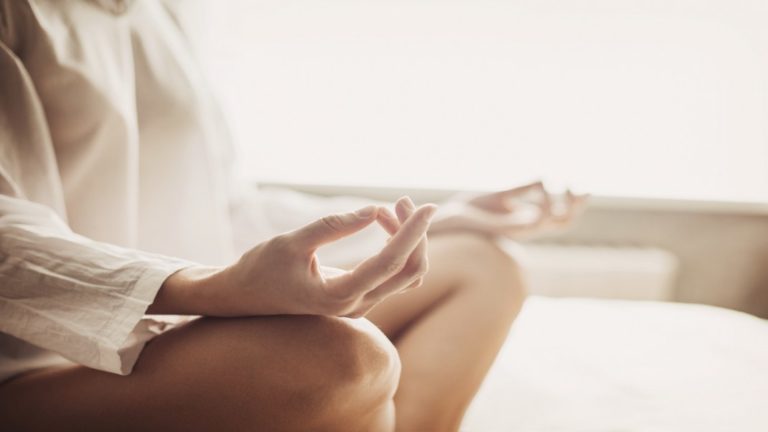
Energetic Anatomy: Chakras 101
There are volumes of text that explore the intricate details of the 7 primary chakras and the more than 100 subtle chakras present in the body. However, for our purposes, a basic understanding of how they operate will suffice. Chakras are the building blocks of our energetic anatomy. In the same way that physical anatomy comprises muscles, bones and other physical structures, our energetic anatomy is made up of Prana, nadis and chakras.
Prana, is life-force energy — where there is life, there is Prana.
It is present in not only the breath, but in all matter that constitutes life. Nadis, are channels or pathways through which Prana energy flows and chakras, can be thought of as wheels or valves that regulate this flow. In essence, chakras are centers of concentrated energy within the body where matter and consciousness meet.
As we explore how energetic anatomy influences the way we show up in the world as Yoga teachers, it helps to understand that the first 3 chakras are associated with our embodied, physical experience. They are the first to develop and together, they regulate our primal, instinctual functions and emotions. The 4th chakra, located in the heart, serves as a bridge between our physical and spiritual identities. In many traditions, the heart is at the center of human connection and is revered as the source of ultimate intelligence. The upper 3 chakras are intellectual in nature, they give us the ability to explore unseen realms of the imagination and awareness.
To study the chakras more deeply, I invite you to check out Ashley Turner’s Chakra Series.
1st Chakra — Muladhara (Root)
Theory: Energy Awareness
mula: root; dhara: holding support
Muladhara is located at the base of the spine around the perineum. As the primary basis of root support, muladhara lays the groundwork for clear energy circulation throughout the entire body. Much like a building relies on the support of its foundation or a tree on the strength of its roots, a well-functioning 1st chakra influences clarity in all other energy centers. When in excess, muladhara creates stagnancy, heaviness and resistance to change. When deficient, one may feel restless, fearful and lack appropriate boundaries.
Healing for the root chakra comes from establishing a healthy connection to the earth body, feeling stability within physical surroundings and developing rituals. Operating from muladhara, Yoga teachers must advocate for self-care and be empowered to hold space for their students.
Practice: Yoga Teaching Tips
- Get grounded. You are likely to give your students a few moments at the beginning of class to sit quietly and transition into practice; it helps to care for yourself in the same way. You might enjoy a few slow breaths or whisper your favorite mantra before you step into the space. This process of integration does not take long, even 5 minutes can make all the difference, but if you are distracted or rushed, it will show up in your teaching.
- Keep Yoga in your body. As an extension of the guidance above, try to avoid showing up to class without having invited Yoga into your physical body. Practice several half sun salutations or a simple body vinyasa to unite body and breath before you begin. By creating a living connection to annamaya kosha, the earth body, your presence will be steadied for your students and they will receive the transmission of your embodiment as part of your teaching.
- Establish trust. Care for the collective muladhara by creating a safe container for every person in the class. This begins from the moment a student enters the studio. Help them become oriented with the physical layout of the space— where practice rooms, restrooms and exits are located, how the room and props are set up, where the teacher will be, etc. Set clear expectations about the overall structure at the beginning of class and then follow through with what you have promised. Always be on time and ask permission before adjusting. Creating a strong sense of security from the outset may attenuate any anxiety about the class, especially for new students.
- Develop rituals. As with anything new, people are generally more at ease when they know how things work, what is going to happen and what is required of them. One very simple way accomplish this is to create an opening and/or closing ritual that you honor in every class. Whether it is something you say or something you do, it can give students a sense of familiarity and belonging.
Watch Out For: Fear
When out of balance, energy in the root chakra may manifest as fear. This can show up as nervous energy while preparing to teach or negative self-talk during a class. Fear however, is simply excitement without the breath. If you are experiencing fear around teaching, it is likely that you are just very excited to share your Yoga with others, all you have to do is breathe.
Pre-Class Ritual
The root chakra regulates the sense of smell and may be soothed instantly by employing grounding scents such as frankincense, cedarwood and patchouli. Before teaching class, apply a gentle amount to the wrists or the feet. Take in the scent throughout practice to stabilize your breath and steady your voice.
##2nd Chakra — Svadhisthana (Sacral)
Theory: Energy Awareness
sva: one’s own; adhisthana: dwelling, residence
Svadhisthana is housed in the low belly between pubic bone and navel, encircling the sacrum. This feminine energy center is at the core of creativity, sensuality and pleasure. In this 2nd chakra, we develop our earliest sense of identity, it is the dwelling place of the self. When constricted, svadhisthana affects our ability to socialize, we may become emotionally and physically rigid or overly serious. In excess, this energy center inhibits our ability to establish boundaries and can lead to addiction or emotional attachment. The sacral chakra not only plays a vital role in creatively generating Yoga offerings as a teacher, but also facilitates the development and maintenance of healthy relationships with colleagues and students.
Practice: Yoga Teaching Tips
- Be creative. The 2nd chakra encourages us to be playful and explore intuitive edges. This creative energy however, is best expressed when it builds from stability in the root chakra. For teachers, this means building stability in the body, breath and mind before exploring the unfamiliar. This is especially true for early morning or evening classes when students may be arriving somewhat disconnected from their physicality or straight from their working lives. After establishing a steady base, let your creativity be intentional and always in service to the student. A good question to ask is whether or not a particular pose variation, transition or sequence adds value to the Yoga experience. That is, does it support inner awareness and presence? If the answer is unclear, consider approaching in a different way.
- Get mobile. The 2nd chakra is related to movement and as a Yoga teacher, this literally means moving around the room while teaching. Adjust your position often to make sure everyone can see you, but avoid moving too quickly while speaking as the changing volume and direction of instructions can be distracting.
- Develop healthy boundaries. This is good advice for everyone, but it is particularly important for anyone who has opened themselves to an energetic exchange. You will inevitably become close friends with many of your students and find that loved ones enjoy coming to your classes. At times though, it becomes necessary to be clear about the distinction between the student/teacher relationship and other relationships that develop. You must also be wary of relationships that create energetic imbalance. For example, if you teach private classes to a close friend, it can be helpful to set a cut-off time for each session out of respect for your time and theirs. The work of maintaining healthy boundaries also involves learning to say no. To students, to studios and even to people you care about. As a new teacher, it can be tempting to say yes to every teaching opportunity, even when your schedule and your spirit are unable to support.
- Be adaptable. The element of the 2nd chakra is jala and the greatest teaching that comes from water is adaptability. In its fluid form, water does not resist obstacles. Without effort, it adjusts its form, shape and direction to accommodate a change in surroundings. As a teacher, you must be ready for anything to happen. Everything from weird noises emitted from your body or your students’ to wardrobe malfunctions, earthquakes and heaters catching on fire. (Yes, all of these have happened to me.)
Watch Out For: Envy
One of the primary emotional symptoms of sacral chakra imbalance is envy and this is something to be aware of in yourself and in your students as you practice and teach Yoga. The easiest way to alleviate the potential for jealously is to celebrate success and desirable qualities in others. In doing so, we acknowledge these attributes as a reflection of the best parts of ourselves. In the penultimate statement of Yoga Sutra 1.33, Patanjali encourages us to, “…delight in the virtuous,” meaning we should champion those who embody qualities we wish to have and follow their example.
Pre-Class Ritual
Svadhisthana is the energy center responsible for our sensate intelligence and can be soothed with physical touch. Hug a loved one or a pet before you leave for class or treat yourself to abhyanga (self-massage) with essential oils that are appropriate for your dosha (constitution).
##3rd Chakra — Manipura (Solar Plexus)
Theory: Energy Awareness
mani: lustrous gem; pura: town, fortress
Manipura is the radiant, masculine energy center located above the navel where the two sides of the ribcage meet, at the solar plexus. This fiery chakra invigorates self-esteem as our center of personal power and will. An overactive 3rd chakra can elicit aggression and ego-driven behavior and when in contraction, we experience energy depletion and low self-worth. Physical healing for the 3rd chakra requires managing healthy digestion and metabolism, and regulating body temperature. As we move deeper into the subtle layers of being, balancing manipura can be a delicate task because even actions which are designed to soothe can be perceived as a threat to this dominant energy center. When we skillfully approach the 3rd chakra indirectly by addressing the chakras above (4th) and below (2nd), we may experience less resistance and greater ease. As Yoga teachers, each time we step into the classroom, we rely on manipura to navigate this role with confidence and grace.
Practice: Yoga Teaching Tips
- Stay in the seat of the teacher. Teaching Yoga is a sacred responsibility and even as a new teacher, when you are nervous or feel as though you lack experience, practitioners will depend on you for guidance and support. Step powerfully into this role and stand in the deep knowing that you are up to the task. Do not hesitate in giving instruction, speak firmly and with conviction to instill confidence in your students as a reflection of your own. This will occasionally mean that you have to take a stand for someone’s safety (telling them to modify a pose to avoid injury, for example) or have a difficult conversation with a student, but this is the important work of the 3rd chakra.
- Experiment before class, not during class. This has to do with collective experience of manipura chakra in Yoga class. Every student deserves to feel like they are being led, cared for and protected during what can sometimes be a vulnerable space of self-exploration. If we experiment with new variations, transitions and sequences during class, we are projecting the potential risk of the unknown onto our students. This is a violation of trust and can drain both energy and confidence. Instead, treat your home practice as a laboratory and work out the mechanics of anything new inside your own body before inviting others to do so.
- Make eye contact. The sensory experience associated with manipura chakra is sight. When you see and allow your students to be seen, you naturally invoke awareness and energy in the solar plexus. You may have experienced this sensation while locking eyes with someone you love deeply or as a gesture of compassion while listening to someone in the midst of struggle. When you make eye contact with a person, you are giving them your complete attention, you are letting them know, without words, that they exist and they matter.
- Ditch the ego. As the ultimate expression of confidence, power and will, the ego is quite susceptible to manipura-related dysfunction. Despite its readiness to participate, the ego has no place in a Yoga practice, which maps onto one of the most valuable things I learned early on: teaching yoga has nothing to do with me. To illustrate why, I call upon the generous wisdom of my teacher Shiva Rea, who often compares teaching Yoga to being a river guide — the true teacher is the river. In Yoga, the true teacher is the unique breath inside each practitioner and as the guide, we are simply there to help navigate. Try not to let your ego become inflated when your students lavish you with praise and at the same time, do not feel discouraged if your class isn’t well attended. It only takes 1 student to make you a teacher and who knows what keeps people from showing up on any given day, sometimes the Universe just has other plans.
- Sense of humor. When manipura is balanced, we are able to experience enthusiasm and joy in every action. This includes a healthy sense of humor. Employing comedic relief in Yoga can be a universal equalizer, it reminds us that we are all human and provides an outlet for nervous energy to dissipate through laughter.
Watch Out For: Shame
When the 3rd chakra becomes imbalanced, shame is generally one of the most common emotional indicators. If you find yourself experiencing shame, particularly as it relates to any aspect of your teaching; I beg you to be gentle. Do not allow yourself to dwell on any part of a particular class, extract the learning and let the rest go. Forgive yourself when you forget something or when you make a mistake. Your students always will.
Pre-Class Ritual
Kapalabhati is a vigorous breathing technique that can be used to increase metabolic energy and stimulate manipura chakra. This igniting breath helps gather the energy of the lower chakras to fuel the upward movement of conscious awareness into the higher chakras. To enjoy this technique, bring the palms to rest on the solar plexus. With each outbreath, snap the belly back, exhaling forcefully through the nose. In kapalabhati, the inhale breath happens naturally between exhales. Begin with a slow rhythm and gradually increase the pace as you feel ready. Complete 50-100 rounds followed by several deep, diaphragmatic breaths to neutralize.
##4th Chakra — Anahata (Heart)
Theory: Energy Awareness
anahata: unstruck, the sound made without two objects striking
Anahata is the center of absolute joy and unconditional love, located in the heart region. As the bridge between body matter and body consciousness, the magnetic field of the heart effortlessly synchronizes the body’s systems with intelligence that rivals the brain. The heart chakra also governs our interaction with the external world, regulating emotions of love, devotion and compassion. When deficient, anahata is withdrawn and produces grief. On the other hand, when in excess, judgmental behavior, emotional dependence and narcissistic tendencies may arise. Restoring balance in the heart requires that we give in proportion to what we receive, encouraging us to ask for help when we need it, to be vulnerable when we are experiencing pain and to spread love when we are joyful. When we encounter people and situations that cause resistance, we can heal anahata by practicing forgiveness and understanding.
Practice: Yoga Teaching Tips
- Create community. When you are teaching, introduce yourself at the beginning of class and where possible, make a special point to connect with those who are new to class. Introduce your students to each other where appropriate, remember names and always thank people for their practice. Support other teachers in your community by going to class and being a great student. Lead by example and embody the energy you want to receive. The intimate experience of belonging provides long-lasting benefits to anahata chakra.
- Seek a mentor. Develop a relationship with someone who inspires you and who is on the Yogic path. Better yet, someone who is also a teacher. Make an effort to connect with this person often, sharing your struggles and victories. Enjoy mutually beneficial support by relating your teaching experiences, learning from each other and holding each other accountable to your highest potential.
- Teach from love. Practice unconditional compassion for all human beings, especially for difficult students. We never know what someone else is bringing to their mat or why they need a Yoga practice, so it is always best to handle with care.
- Be vulnerable. Share your present and personal story of yoga. Your students are on your side, even when it may seem like they are not. The process of being vulnerable is an expression of your humanity and may give someone else permission to feel whatever they need to in class. This does not imply that you should air your grievances with teaching as a platform for pity or commiseration. To the contrary, it invites you to express your authentic journey through teaching as a means to illuminate the path for others.
Watch Out For: Negativity
As the center of our emotional intelligence, any imbalance occurring in anahata may yield negative thoughts and feelings. The remedy, contrary to popular belief, is not to exude happiness in lieu of grief when negative conditions arise. Yoga does not ask this of anyone, not even a teacher. Instead, Yoga is a practice that meets you where you are in any given moment and allows you the freedom to choose your response. Any attempt to suppress negative tendencies will likely be met with resistance and further frustration. Instead when you experience something negative, either internally or externally, acknowledge it and allow yourself to observe the physical sensations that develop. In separating the physical response from the reality, we avoid the temptation to assign meaning and label an experience as negative. As a result, it will inevitably lose the ability to maintain our attention, which is the only thing that keeps negativity alive.
Pre-Class Ritual
Practice a shoulder mandala to open the front and back of anahata chakra using the heart-opening mudras below:
- Heart Hug — cross right arm on top of left and reach for opposite shoulder blades with fingertips
- Garudasana arms — right arm on top
- Half Garudasana arms/tricep stretch — release right arm to side
- Gomukhasana Arms — right arm high
- Paschima Namaskarasana — hands in prayer at low back
- Yoga Mudra — interlace fingers and extend elbows to open heart
- Release arms to a T and repeat on second side
##5th Chakra — Visshudha (Throat)
Theory: Energy Awareness
visshudha: to purify, especially pure
Visshudha, located in the throat, regulates a number of hormonal functions as well as the ability to articulate the inner world. As the connection between the 4th and 6th chakras, a balanced throat center facilitates harmony between the heart and the head. When visshudha is over-stimulated, a person often interrupts and talks over others without listening. When the 5th chakra is contracted, the voice becomes unsteady and introversion results. Another indication of throat chakra imbalance is tone deafness and an inability distinguish the pitch and tonal quality of one’s own voice. To soothe this energy center, match self-expression with self-reflection and use the vibratory healing of sound in song or chanting. For Yoga teachers, developing a clear voice plays a vital role in our ability to communicate with students.
Practice: Yoga Teaching Tips
- Speak clearly and slowly. The pace of your voice defines the rhythm of the class and can influence how your students breathe. Pay special attention the way the class is moving. For example, do you notice a majority lagging behind your cues? This may be an indication that the breathwave of the class is a bit slower. Enjoy this opportunity to co-create with your students and adjust your pace accordingly.
- Practice verbal economy. This is different than verbal scarcity which can leave important information out. Instead, verbal economy suggests eliminating words that do not add value or those which are unnecessary. Let your instructions be poetic and fluid, but not overly complex. Einstein said it best, “make things as simple as possible, but not simpler.” Be on the lookout for signs of confusion or students seeking visual direction. Change your language as needed or take time to communicate what you are asking for by demonstrating in a position that is highly visible by most people in the class.
- Encourage self-reflection. Elevate the vibration of the collective visshudha energy by periodically asking contemplation questions to help your students connect to their inner experience. Foster a positive internal dialogue by speaking in the affirmative and allow ample space for students to listen internally for their own answers.
- Be authentic. You will inevitably embody the qualities of your teachers because this is the way the practice has been transmitted to you. Through a devoted home practice however, you will begin to identify your unique style of teaching. Credit your teachers and the Yoga lineage where due and always tell the truth. If it doesn’t feel authentic coming out of your mouth, then it probably shouldn’t.
- Listen. Don’t try to solve problems, just listen and be available to your students for whatever comes up in class. This allows people to feel validated without needing to be “fixed.” Most importantly, be ok with silence, sometimes just being with another human is enough.
Watch Out For: Gossip
The dark side of visshudha chakra is any speech that carries a negative vibration and when dysfunction occurs, a person may be inclined to participate in gossip. As a Yoga teacher, you are participating, albeit passively, even when students around you are the guilty parties. Instead, elevate the vibration by being an active optimist or even just a realist to help those around you gain perspective. Complaining falls into this same category, it is a major energy thief and serves no one. Unless you’re prepared to offer up a solution, keep the complaints to yourself.
Pre-Class Ritual
Chant the Pranava OM. Be it in your car, in the bathroom or from the rooftop. Welcome the primordial vibration of the universe into your body. This will connect you to the divine energy circulating in and around us at all times and clear any congestion in your voice before teaching.
##6th Chakra — Ajna (Brow)
Theory: Energy Awareness
ajna: command, all knowing
Ajna, located in the center of the brow, is the command center for the body and manages the top-down exchange of information. The proverbial third eye houses both the pineal and pituitary glands which regulate the endocrine system, a sophisticated network of hormonal management influencing body function from the cellular level to vital organs. This region is associated with imagination and higher levels of consciousness which in excess, can result in delusion, difficulty concentrating and feeling disconnected from reality. When blocked or constricted, ajna can cause headaches, dullness, poor vision and faulty memory. As a gateway to the highest potential for transformation in the 7th chakra, the 6th chakra is responsible for intuitive wisdom and vision.
Practice: Yoga Teaching Tips
- Be a student. The 6th chakra is responsible for intellectual thinking and higher learning. To keep this region functioning and healthy as a teacher, practice different styles of Yoga as part of your self-care regimen, particularly those that challenge you to think in a different way. Attend workshops and teacher trainings as often as is possible to continually expand your wealth of knowledge and to explore different ingredients for teaching a yoga class.
- Commit to home practice. This concept was highlighted earlier in the context of practicing what you will eventually offer in class. It is important also, however, to have a committed home practice that is just for YOU. This practice requires intuitive listening for what your body, mind and spirit need each day. Again, this devoted practice need not consume hours of your day, but it should leave you feeling nourished.
- Do everything in class on purpose. There are variable schools of thought on how to teach a vinyasa yoga class, particularly when it comes to sequencing. Spontaneity and in-the-moment customization certainly create a dialogue between teacher and student and have the potential to add value to the practitioner experience. Nonetheless, I subscribe to the method of purposeful sequencing called vinyasa krama in which each pose is selected intelligently to support the overall arc of the class. The flow remains spontaneous and fluid, but the sequence and the substance are never random. This high-level organization may not be immediately obvious to everyone in the class, but their 6th chakras will experience greater clarity as a result.
- Plan extra time for Savasana. When ajna is in excess, the mind has a tendency to rush from one thought to the next and this can show up during class when we rush through the really good stuff. To mitigate the potential for urgency at the end of class, leave more than enough time for Savasana and re-entry. This process is often the most important part of the practice because it informs what your students will take home with them. If you find yourself with a choice between one more pose or a longer savasana, the latter will always be a winner.
Watch Out For: Doubt
There will likely come a time when we experience self-doubt and ignore the intuitive wisdom of the 6th chakra. This is a gentle reminder for us to slow down and reconnect with the vision center so that we may live instead, from a deeper knowing and acceptance of our true nature. When you witness a seed of doubt being planted, the best approach is to unearth it and bring it to the surface. Speak it aloud or write it down to remove it from your internal awareness and let it dissolve into space.
Pre-Class Ritual
One of my favorite methods for soothing the 6th chakra is to rub the hands together as quickly as possible, generating heat as a result of friction. Then, place the hands over the eyes and experience the residual energetic vibration. Try this while seated or lying down to calm the mind and withdraw from distracting thoughts.
##7th Chakra — Sahasrara (Crown)
Theory: Energy Awareness
sahasrara: thousand-petaled
Sahasrara is often depicted as a thousand-petaled lotus representing the potential to emerge from the muddy waters of material embodiment into the absolute freedom and clarity that blooms in the 7th chakra. The crown chakra rises above the head and connects the physical earth body to the spiritual energetic body. When deficient, the sahasrara may cause learning difficulties and can trap energy in the lower chakras. In excess, the 7th chakra has a tendency to pull us out of the earthbound experience, leading to inaction or inability to follow through with material tasks. Similarly, over-intellectualization is a symptom of too much energy circulating in the crown and can produce a racing mind, insomnia or even nightmares. Healing for sahasrara is primarily spiritual in nature, encouraging us to study and observe even mundane experiences as embodied expressions of divine consciousness. The greatest gift bestowed upon teachers by the energy of the crown is meditation. Sit in stillness whenever you can.
Practice: Yoga Teaching Tips
- Live your dharma. Remember what inspired you to teach in the first place, write it down and refer to it often. In addition to developing class-specific themes and intentions, become very clear around your overall teaching vision and use this as a filter for making decisions and taking action. Let teaching Yoga be but a single part of your living purpose, where passion, profession and mission intersect.
- Avoid burn-out. This is one of the greatest risks to Yoga teachers because it can happen gradually over time until eventually the body responds with injury or illness in an effort to get our attention. Be aware of early warning signs such as feeling uninspired, difficulty sleeping, waking up tired, and skipping out on personal practice. When you begin to notice these symptoms, take a day off. Find a sub for class to spend a whole morning outside and unplugged. Get a massage or go to a restorative Yoga class, using this invitation to make space for self-care.
- Take your Yoga off the mat. Develop and maintain outside interests that support your well-rounded happiness and health as a teacher. Go outside, play games, learn how to play an instrument or take a creative writing class. Yoga is so much more than what happens on the mat and if we let it, it can enhance the way we interact with the world. In the words of Christina Sell, “…make your life Yoga, don’t make Yoga your life.” Explore new ways of experiencing a mind-body connection and be open to how Yoga helps navigate other areas of your life.
- Evolve. In order to grow and change, stay open to feedback from teachers, students and friends. Receive all offerings with an open heart and try not to take anything personally. Use every opportunity to let this information land in a way that serves your craft and reveals something newly available to you.
Watch Out For: Attachment
One common symptom of both deficient and excessive energy in the 7th chakra is the susceptibility to attachment. When sahasrara is congested, energy remains trapped in the lower chakras and common attachments like excessive greed and desire may result. If too much energy is present in the crown, there can be a tendency to over-identify with our present reality leaving us stuck and unable to grow or move forward. In teaching Yoga, this may show up as becoming too concerned with the identity of the teacher or assigning self-worth exclusively on the external metrics of our classes. In Eastern Body, Western Mind, Anodea Judith explains, “Restoration of the seventh chakra is about awakening to the reality of our spiritual nature. We open this chakra by developing the capacity for stillness, for which there is no better tool than meditation.” Therein lies the remedy, meditate daily.
Pre-Class Ritual
By positioning the heart above the head, inversions supply greater blood flow to the heart. The increased volume of blood signals a regulator in one of the heart chambers to slow the heartbeat and in effect, activates the parasympathetic nervous system. In this way, inversions prepare the body for meditation and are a quick way to drop into stillness. Enjoy a brief inverted posture prior to teaching in order to shift your energetic awareness into receptivity and prepare for leading moving meditation. To conserve the vital energy required to show up fully for your students, favor inversions that are restorative such as viparita karani and salamba sarvangasana.





